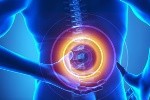Clinical Research Evidence of Cupping Therapy in China
Background
Cupping therapy belongs to traditional Chinese medicine, the heritage from several thousand years. It is used with one of several kinds of cups, such as bamboo cups, glasses or earthen cups, placing them on the desired acupoints on patients’ skin, to make the local place hyperemia or haemostasis, which can obtain the purpose of curing the diseases [1].
The earliest records of cupping is in Bo Shu (anancient book written on silk), which was discovered in an ancient tomb of the Han Dynasty in 1973 [2]. Some therapeutic cupping methods and case records of treatment were also described in early Chinese books. Zhao Xu eming, a Chinese doctor practicing more than 200 years ago, completed a book named “Ben Cao Gang Mu Shi Yi”, in which has described in detail the history and origin of different kinds of cupping and cup shapes, functions and applications [3].
There are seven major types of cupping practice in China. Usually, cupping practitioners utilize the flaming heating power to achieve suction (minus pressure) inside the cups to make them apply on the desired part of the body. This basic suction method of cupping therapy is called retained cupping, which is most commonly used in Chinese clinics as the first type of cupping. Besides this kind of suction, different types of cupping composed with different methods.
The second type of cupping is bleeding cupping (or wet cupping), which contains two steps: before the suction of the cups, practitioners should make some small incisions with a triangle-edged needle or plum-blossom needle firmly tapping the acupoint for a short time to cause bleeding.
The third one is moving cupping, which practitioners should control the suction by gently moving the cup toward one direction; then is empty cupping, which means the cups are removed after suction without delay; or needle cupping, which should apply the acupuncture first, then apply the cups over the needle.
Cupping practitioners may also used other methods of suction, such as medicinal (herbal) cupping, which used bamboo cups, usually put the cups and herbal into a deep pan with water and boiled them together, after 30 minutes apply the cup suction on specific points according to steam instead of fire; or water cupping which is a technique involves filling a glass or bamboo cup one third full with warm water and pursuing the cupping process in a rather quick fashion.
Each kind of cupping therapy may be used for different diseases or different purposes of treatment. Because cupping is widely used in Chinese folklore culture, the technique has been inherited by the modern Chinese practitioners.
In the 1950s the clinical efficacy of cupping was confirmed by Co-Research of China and acupuncturists from the former Soviet Union, and was established as an official therapeutic practice in hospitals all over China [4]. This issue substantially stimulated the development of further cupping research.
In the context of evidence-based medicine (EBM), we need to evaluate therapeutic effect of cupping therapy to inform the practice heritage from ancient time.
Contact Us
Chalmers Medical Building
328 Hwy 7 East Suite 201,
Richmond Hill ON L4B 3P7
Tel: 416 399-3888
E-mail: info@aahclinic.com
Conditions Treated
Effective Herbal Therapy for Inflammatory Bowel Disease
NO Surgery!
Carolyn XU Treats Ulcer Colitis Successfully
Considering Therapy?
Resource Links
References
Donation
Great things happen when you put your heart into it.
Click Here to Send us your request
Tips
Questions about your first appointment or if your insurance will cover the cost? Find more information below.















